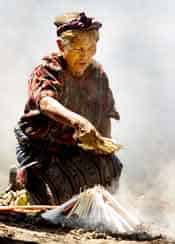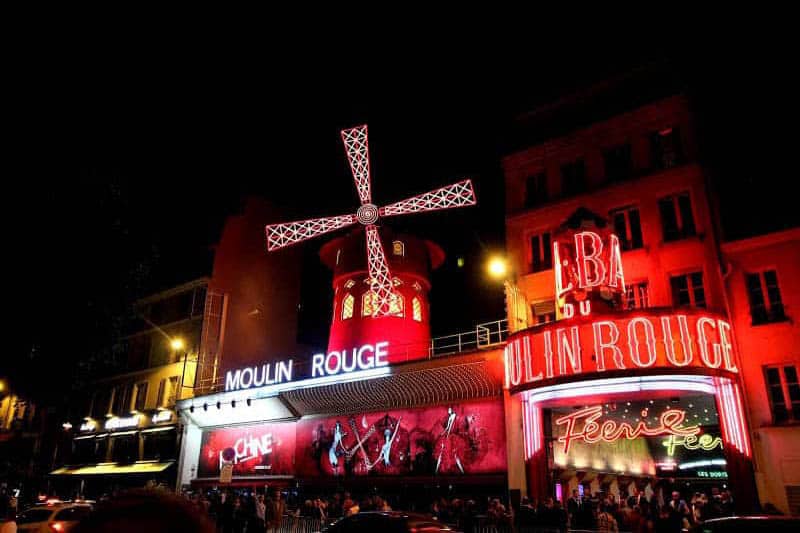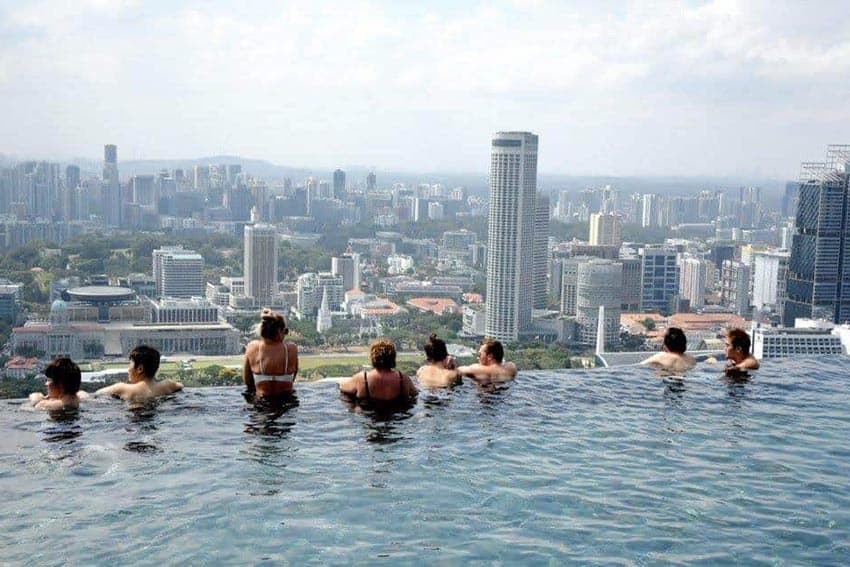By Paul Shoul

I have been a pro shooter for more than 20 years and recently had the chance to travel to Guatemala to photograph for GoNOMAD. I fell in love with Guatemala. It is a rich and diverse country full of opportunity for the traveler /photographer. You can meet the wonderful Mayan people.
See the outstanding landscape dotted with active volcanoes as well as the great archeological sites like Tikal. Or visit one of the quaint Spanish colonial towns like Antigua or the magnificent Lake Atitlan.
If you are thinking of traveling there I have only one piece of advice — Do it; go there as fast as you can. If you’re on your way and bringing along a camera, here are some time-tested tips I can share with you about Guatemala in particular and for travel shooters in general.
Gear. What to bring and how to get it there….and back.
When I travel I always have to balance the conflict between everything I want to bring if I could and the reality of having to lug it all around with me on the trip. I try to think of what I will be shooting and what I need to accomplish it. I travel with more than the casual traveler but what I bring might give you some ideas of how to think about your own gear.

I travel with two cannon digital bodies, a 10d and the newer Canon 20d so I can use two different zoom lenses and have coverage for whatever happens, as well as the security of having a backup. My lenses are a 70 to 200 Canon 2.8 zoom, a canon 20 to 35mm L 2.8 zoom and an Ef28 to 135mm image stabilizer, and a 2x Tele-extender.
That is a lot of heavy glass. But here’s why. The 20 to 35 is perfect for landscapes and wide enough for interiors. The 70 – 200 is my primary portrait lens and gives me enough reach to shoot form a distance if I have to. The 28-135 is a great one-camera walk-around lens that gives me wide to telephoto and with its image stabilizer system allows me to shoot at very low shutter speeds in low light.
Finally, these lenses are sharp as a tack and worth the trouble. I also bring a flash which I hardly ever use but when I do it saves me time. A Cullman tripod is light, folds flat and packs well.
As I am shooting all digital on the road, as many of you will be, I try to bring enough compact flash memory cards to cover the whole trip if I can and a way to back them up for peace of mind. I use Lexar cards and swear by them. I have never had a problem.
On this trip, I brought a total of seven gigabytes of memory and a Flashtrak 40 gig portable hard drive for back up. Add to this extra batteries for the cameras and the flash, separate chargers for each of them, stuff to clean the lenses and it’s a hefty little package. The cameras, lenses and flash cards fit neatly into one padded camera bag and everything else goes into individual heavy duty zip lock bags and fits into a small rolling on-board bag and neither of them ever leave my side while I am in transit.
When you’re going through security at the airport
If you are shooting digital you have nothing to worry about. If, however, you are shooting film, beware the x-ray machine. It can ruin your film with light streaks, especially if you are using fast film with an ASA of 400 or more.
Many security people will tell you that it is safe for all film but I have had film damaged before. You have two options. One, you can buy a lead-lined film bag that will keep it safe. I have one made by Optech/USA that will hold about 20 rolls of 35mm, or you can demand a hand inspection that by law in the US they have to allow you. I have done this many times and the key is to be pleasant and patient.
Keep your film in clear zip lock bags to make it easy for them. Once you’re out of the country, especially in Latin America, it’s a crapshoot as to whether you’ll be allowed one. Everyone is nervous these days and if they say you’ll have to run it through the machine you’ll just have to hope for the best.
It is not always fatal. Whatever you do, though, don’t pack your film in your check-in luggage and think you’re safe. They use even stronger x-ray machines on them.
To shoot or not to shoot, that is the question
A camera takes on different roles for different people. Regardless of what kind of camera you are using. Photography is not all about the equipment. As I like to say, “It’s not what you are looking through that matters, it’s what you are looking at.”
For some people, the camera is just to have a visual record of where they were. For others, it’s a way to make art out of their surroundings and to see even more clearly and to meet people.

For others, it is a shield that can keep them apart from ever getting close, and can blind them. I always feel that unless it’s a news assignment, the manner in which I conduct myself, the people I meet and the experiences I have are far more important than the images I make of them.
The indigenous Mayan people that you will meet in Guatemala are more than objects of curiosity. They are your fellow members of the planet. If you approach them with respect, people will pick up on that, and they will treat you the same.
Sometimes by letting images pass by if it is obviously invasive to someone will get you better access and better photos in the long run. It’s a Zen thing. If you act like a thief with your camera, people will feel like they have been robbed, and in Guatemala, in particular, this can set you apart and have serious consequences.
In 2000 a Japanese tourist was killed by a mob of angry villagers in the village of Todos Santos Cuchman while photographing children at the market. It was an unfortunate combination of events that led up to it.
First of all, there are some Mayans who feel that the camera can take their soul and have a general distrust of any camera.

Secondly, there has been a persistent rumor that foreigners come to Guatemala to steal children and primarily it was because of an incredibly stupid move by the tourist that was killed.
According to a friend of mine who works with the guide that was leading the group, the woman had gone up to some children and wanted to photograph them at a different location, so she took them by the arm and led them away. When their mother looked for them she saw a stranger in the distance with her children and freaked out like any mother would, anywhere.
All hell broke loose…
Although this was an isolated and extreme incident, it is a good lesson for all of us to treat others as you would be treated. At times I did notice a reluctance and fear of the camera that was more pronounced than in other parts of Latin America. I had an experience while photographing in Chichicastenango that also may hold a lesson or two.
Chichicastenango is a beautiful market town located in the Altiplano mainly inhabited by QuicIndiansans.
In the morning I set out to photograph the market. For a brief hour or so I felt like I had it to myself. People were getting their stalls ready, eating, shopping. It was a beautiful day and I had some great conversations with people in my limited Spanish, a few funny moments and made some fine images.
I mentioned to Ivania, my guide from Inguat, that I finally felt like I was in the real Guatemala. “Just you wait,” she said. I was not sure what she meant until suddenly a large group of tourists descended on the main square of the market.
They dove into the crowd descending upon them with a hundred cameras. They seemed to have a limited time and wanted to get as many images as fast as possible. A feeding frenzy ensued. Groups of four or five people crowded around individual Mayans, bumping into each other trying to get position in much the same way I do a at news event with a politician.
It was scary, and depressing to me. I was not sure if it was I who felt invaded, that this was “my market” and I wondered if I was fooling myself in thinking that I was any different. In any case, I had an immediate visceral reaction and before I knew it I had turned around and started photographing the tourists.
I was polite and respectful, but definitively focused on them. The reaction was amazing. Their body language became stiff and awkward. Some glared at me in anger, others tried to stare me down with their cameras, and others grabbed their children and walked away covering their faces. I did not do anything more than what they or we were doing to the Mayans at the market, except that I had turned it around and obviously had crossed a line.
When I awoke from my photo trance I looked around to see one smiling Mayan face after another reaching to meet my eyes in recognition and thanks. There were thumbs up all around and many slaps on my back. I was proud and embarrassed at the same time and the event still has me thinking.
Please don’t get me wrong. I have and had nothing against these tourists, and some of them had laughed along with me at the absurdity of it all. It’s just that I want all of us to think about what we’re doing when we travel and take pictures. Our good intentions as individuals are often clouded by the effect of us as a group.
In all travel in Latin America there is often a class issue that we have the right to photograph poor people and they don’t have the right to say no. Or in fact don’t even care. They do, just as we do. If you treat people as equals, the result is fast, obvious and rewarding, both as a photographer and as a person.
- Everything is Better in Lisbon - March 1, 2024
- Exploring Gran Canaria in the Canary Islands - October 17, 2023
- Traveling Lanzarote: Hot Times in the Canary Islands - June 28, 2023





